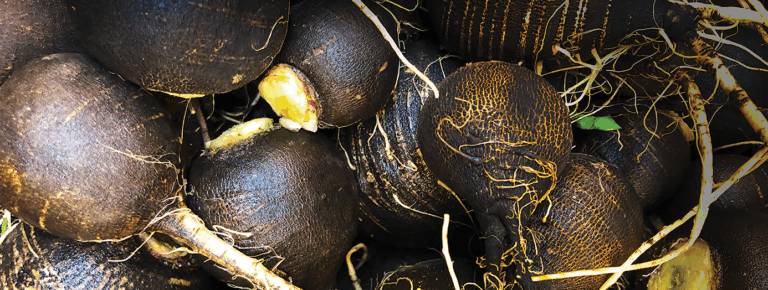Integrative Nutritional Support of Dental Health for Pets
Integrative Nutritional Support of Dental Health for Pets
Oral and dental health significantly affects overall systemic health in both animals and humans.1,2 As veterinary practitioners, it is extremely important to recognize dental health for pets in the evaluation and treatment planning for patients. Simply put, chronic disease in the mouth affects the rest of the body as a constant source of chronic inflammation as well as bacterial burden. There is an extremely high incidence of this problem in companion animals. Periodontal disease is the single most common problem diagnosed in dogs and cats.3,4 Despite this fact, dental disease is often overlooked when addressing chronic systemic disease. Equally important, oral health should be a significant focus in preventative health and wellness.
In the interest of integrative and proactive health, host modulation is an exciting new treatment approach in periodontal therapy of humans and animals.5 The term host modulation implies supporting the host (i.e. the whole patient) to control the body’s response to inflammation and infection. This is important because although plaque is considered to be the etiologic agent of periodontal disease, it is actually the body’s response to the plaque (i.e. the ensuing inflammatory cascade) that ultimately leads to periodontal disease and resultant bone loss. If the acute inflammatory response can be resolved quickly, tissue injury is prevented. Alternatively, inadequate resolution and failure to return the tissues to homeostasis results in chronic inflammation and eventually periodontal disease.
There are many options available to affect host modulation and to assist the body’s ability to combat gingival and general inflammation. Not surprisingly, supporting oral health starts with the same foundation as general health, i.e. diet and nutrition.
Diet and Nutrition: Dental Health for Pets
Diet and nutrition choices are foundationally important in overall health, but also for dental health. Although most veterinarians were taught to believe that dry pet foods were beneficial to dental health, this has been disproven in specific studies.6 In fact, most kibble is too small to require any chewing action, and even when chewed it provides minimal cleaning of calculus (tartar) and only on the incisal tips of the teeth. In other words, chewing kibble does not promote cleaner teeth at the gumline, where it really matters. This myth stemmed from the belief that tartar was the best indicator for the level of oral disease, but it is now understood that gingival inflammation is a more accurate indicator for the level of oral infection. Beyond the fact that dry foods do not provide a mechanical “cleaning” benefit, these foods are also heavily processed via extrusion methods (high heat and pressure). Heavy processing creates AGEs (Advanced Glycation End Products), which are known to be pro-inflammatory. This means that heavily processed foods actually fuel more inflammation in the body, including in the mouth and oral tissues.
Consequently, minimally processed, species-appropriate diets have a significant influence on overall wellness – including oral health – and in reducing levels of chronic inflammation. Additionally, there is speculation that fresh “raw” foods contain specific enzymes that provide an advantage for resistance to bacterial plaque as well, but this has not yet been proven in studies. Raw meaty bones can provide an active chewing and gum cleaning advantage. Cooking bones changes the texture to a more brittle nature, which creates a danger in the potential to splinter and cause gastrointestinal (GI) perforation. Another concern regarding bones in general is the risk of damaging teeth. Veterinary dentists report that large-sized, raw bones, such as marrowbones, rarely cause broken teeth. This is in contrast to small and thin long bones and similar shaped objects, which are common culprits in damaging teeth. This has to do with canine oral anatomy and the physics of mastication as the dog’s teeth are positioned against the object being chewed. Larger, bulky objects do not create the same angle and force on the carnassial (cheek) teeth, as do smaller and longer objects. In fact, common items seen to break teeth are nylon bones, cooked bones, antlers, hooves, and bully sticks.
In addition to the impact that type of diet has on oral health, various nutrients can help to modulate both oral and systemic inflammation.
Antioxidants
Recent studies have linked chronic oxidative stress with periodontal disease.7 Oxidative stress can be defined as free radical damage to the body’s cells and tissues. In fact, proper equilibrium between free radicals and antioxidants is now thought to be the main prerequisite for healthy periodontal tissues. As such, antioxidants can play an important role in periodontal health and offer protective benefits.8
There are numerous nutritional products available for increasing antioxidant capacity. These can range from vitamin supplementation (such as vitamins C and E), preferably from food-based sources as opposed to synthetic vitamins, to specific products providing a more effective increase in total antioxidant capacity.9,10
In regard to systemically increasing antioxidant capacity, many recent studies have evaluated the NRF2 pathway and its tremendous benefits to overall health. NRF2 is a messenger protein which triggers a natural pathway in the body to stimulate the body’s own antioxidant production. These indirect, internally produced antioxidants (versus direct, food-based, externally sourced antioxidants) are very powerful enzymes such as glutathione, superoxide dismutase (SOD) and catalase. These indirect antioxidants are known to be highly protective against free radicals and in reducing oxidative stress.11,12 Stimulating the NRF2 pathway to create increased production of powerful antioxidants such as glutathione and SOD has benefits for periodontal disease (as well as more than 200 other diseases that have been linked to oxidative stress). Indirect antioxidants cannot be well absorbed by the gut and must be produced by the body.
Minerals
These nutrients are critical to dental health for pets, for supporting jawbone integrity and also stronger enamel. Once tooth enamel is damaged, it cannot be reformed, but weakened enamel can be strengthened or restored to some degree by improving its mineral content.
Calcium plays a key role in bone formation and gives the jawbone strength and structural integrity to keep the tooth roots in their sockets. Magnesium and calcium work together and complement each other in supporting hard enamel and maintaining bone density. Phosphorus also supports calcium’s role in bone production and remodeling. Without proper levels of phosphorus, bones will become more brittle and teeth will chip more easily. Manganese is another important trace mineral known to be involved in bone health and supports the mineral density of bone.
Other Nutrients
Recent studies on the use of fatty acid supplements have shown beneficial results in periodontal inflammation.13-18 The anti-inflammatory action of omega-3 fatty acids (DHA & EPA) are widely known for their joint benefits, but they have also been shown to support periodontal, heart, kidney, and brain health too. Furthermore, due to the high epithelial penetration of fatty acids, topical application appears to be very useful for the treatment of local oral inflammatory diseases, including periodontitis.
A deficiency of coenzyme Q10 (CoQ10) has been found in human patients with periodontal disease, and supplementation of CoQ10 (both systemic and topical) is shown to have beneficial effects on periodontal health.19-23 Ubiquinol is the bioactive form of CoQ10 and is therefore often used as a dietary supplement. Folic acid is another nutrient studied for its effects on oral health, such as preserving gum tissue and reducing the incidence of gingivitis and periodontitis.24
Probiotics
The benefit of probiotics in supporting both GI health and overall immune system function is the subject of growing focus. The mouth and oral cavity are indeed part of the GI tract. Furthermore, the body’s microbiome plays a critical role in systemic immune system function and in chronic inflammation. Recent information supports the use of probiotics both orally and topically to support oral health. Canine and human studies report significant results with reduced probing depth of periodontal pockets and decreased periodontal inflammatory mediators with the use of orally ingested and topically applied probiotics.25 There are also benefits with topical application of probiotics, as these beneficial bacteria will form colonies that create a healthier biofilm in the mouth and subsequently help to crowd out the harmful bacteria that cause the inflammatory response that leads to periodontal disease.
Active Plaque Removal
One the most effective proactive methods of supporting dental health for pets is plaque removal. Regular professional dental cleanings are extremely helpful if they are done properly and performed with the patient under general anesthesia. It is estimated that 60 percent of oral pathology is located under the gumline, which means an awake exam (or attempt at cleaning) will miss the majority of oral disease problems. General anesthesia is required to perform a complete oral exam and to obtain dental x-rays to find pathology and address it.26-29
The most effective way to achieve plaque removal via home care is with the mechanical action of regular tooth brushing.30 The product used on the toothbrush is not as important as the mechanical action of disrupting (wiping away) the plaque biofilm.
That said, a few natural products that can be helpful when applied directly onto the gums or used on a toothbrush include coconut oil and therapeutic grade essential oils. Coconut oil is rich in medium-chain triglycerides (MCTs) and lauric acid, is naturally antimicrobial, and has also been shown to help draw out toxins when used on the gums (notably with the process of “oil-pulling,” which is becoming increasing popular for people). Many essential oils (EOs) are known to be antimicrobial, anti-inflammatory, pain relieving and/or specifically beneficial for oral tissues and mucous membranes.
Medical literature supports the use of several different EOs for treatment of oral diseases:
- Clove
- Lemon
- Orange
- Basil
- Eucalyptus
- Tea tree
- Myrrh
- Copaiba
It is important to note that for EO use in any species, only therapeutic grade oils from reputable manufacturers should be employed. Even with pure EOs, caution must be used with proper dilution, depending on the specific use, route of application, species, and size of the patient. Most EOs should be diluted with fractionated coconut oil or another carrier oil, and proper references should be consulted for safe dosing and application techniques.
It is likely that most pet owners do not achieve dental care for their pets on a daily basis, but they are certainly less likely to make that effort if they are not educated as to the value it can provide to the health of their pet, and this is especially true for small breed dogs. If more pet parents understood how much this daily routine can impact the health and longevity of their pet, the compliance rate may be much higher.31
While the impacts of periodontal disease on systemic health have been well established, there is growing recognition regarding the role that chronic inflammation plays in the progression of all illness. With this understanding, it is clear that maintaining dental health for pets is a vital piece in supporting whole body health and wellness. As integrative veterinary practitioners, it is important to recognize the value of educating pet parents about proactive options that support better oral health for their pets.
- Niemiec BA: Local and regional effects of periodontal disease. In: Veterinary Periodontology. Niemiec BA Ed), Jon Wiley and Sons, 69-80, 2012
- Niemiec BA: Systemic manifestations of periodontal disease. In: Veterinary Periodontology. Niemiec BA Ed), Jon Wiley and Sons, 80-91, 2012
- National Companion Animal Study. University of Minnesota Center for companion animal health. Uplinks: pp 3, 1996.
- Lund EM, Armstrong PJ, et al: Health status and population characteristics of dogs and cats examined at private veterinary practices in the United States. J Am Vet Med Assoc. 214, 1336-41, 1999.
- Niemiec BA: Host Modulation Therapies. In: Veterinary Periodontology. Niemiec BA Ed), Jon Wiley and Sons, 299-304, 2012
- Harvey CE, Shofer FS, Laster L: Correlation of diet, other chewing activities, and periodontal disease in North American Client-owned dogs. J Vet Dent. 13: 101-5, 1996.
- Dahiya P, Kamal R, Gupta R, Puri A: Oxidative stress in chronic periodontitis. Review Article. Chronicles of Young Scientists. 2(4):178-81, 2011.
- Pavlica Z, Petelin M, Nemec A, et al: Measurement of total antioxidant capacity in gingival crevicular fluid and serum in dogs with periodontal disease. Am J Vet Res. 65 (11)1584-8, 2004.
- Parrish JH Jr, DeMarco TJ, Bissada NF: Vitamin E and periodontitis in the rat. Oral Surg Oral Med Oral Pathol. 44(2):210-8, 1977.
- Kim JE, Shklar G: The effect of vitamin E on the healing of gingival wounds in rats. J Periodontol. 54(5):305-8, 1983.
- Hybertson BM, Gao B, Bose SK, et al: Oxidative stress in health and disease: the therapeutic potential of Nrf2 activation. Mol Aspects Med.32:234-6, 2011.
- Davis K: Understanding antioxidants: using various arsenals to impact the oral environment. Dent Today. 31(11):92, 94, 96-7, 2012.
- Kesavalu L, Vasudevan B, Raghu B, et al: Omega-3 fatty acid effect on alveolar bone loss in rats. J Dent Res. 85:648-652, 2006.
- Kesavalu L, Bakthavatchalu V, Rahman MM, et al. Omega-3 fatty acid regulates inflammatory cytokine/mediator messenger RNA expression in Porphyromonas gingivalis-induced experimental periodontal disease. Oral Microbiol Immunol. 22:232-239, 2007.
- Vardar S, Buduneli E, Tu¨rkog˘lu O, et al: Therapeutic versus prophylactic plus therapeutic administration of omega-3 fatty acid on endotoxin-induced periodontitisin rats. J Periodontol. 75:1640-1646, 2004.
- Vardar S, Buduneli E, Baylas H, Berdeli AH, Buduneli N, Atilla G: Individual and combined effects of selective cyclooxygenase-2 inhibitor and omega-3 fatty acid on endotoxin-induced periodontitis in rats. J Periodontol. 76:99-106, 2005.
- Nauroth JM, Liu YC, Van Elswyk M: Docosahexaenoic acid (DHA) and docosapentaenoic acid (DPAn-6) algal oils reduce inflammatory mediators in human peripheral mononuclear cells in vitro and paw edema in vivo. Lipids. 45(5):375-84, 2010.
- Naqvi AZ, Buettner C, Phillips RS, Davis RB, Mukamal KJ: n-3 fatty acids and periodontitis in US adults. J Am Diet Assoc. 110(11):1669-75, 2010.
- Littarru GP, Nakamura R, Ho L, Folkers K, Kuzell WC:. Deficiency of coenzyme Q 10 in gingival tissue from patients with periodontal disease. Proc Natl Acad Sci U S A. 68(10):2332-5, 1971.
- Nakamura R, Littarru GP, Folkers K, Wilkinson EG: Study of CoQ10-enzymes in gingiva from patients with periodontal disease and evidence for a deficiency of coenzyme Q10. Proc Natl Acad Sci U S A. 71(4):1456-60, 1974.
- Wilkinson EG, Arnold RM, Folkers K, Hansen I, Kishi H: Bioenergetics in clinical medicine. II. Adjunctive treatment with coenzyme Q in periodontal therapy. Res Commun Chem Pathol Pharmacol. 12(1):111-23, 1975.
- Hanioka T, Tanaka M, Ojima M, Shizukuishi S, Folkers K: Effect of topical application of coenzyme Q10 on adult periodontitis. Mol Aspects Med. 15 Suppl:s241-8, 1994.
- Wilkinson EG, Arnold RM, Folkers K: Bioenergetics in clinical medicine. VI. adjunctive treatment of periodontal disease with coenzyme Q10. Res Commun Chem Pathol Pharmacol. 14(4):715-9, 1976.
- Stein GM, Lewis H: Oral changes in a folic acid deficient patient precipitated by anticonvulsant drug therapy. J Periodontol. 44(10):645-50, 1973.
- Lee JK, Kim SJ, Ko SH, Ouwehand AC, Ma DS: Oral Dis. 2015 Sep;21(6):705-12. Epub 2015 Apr 20. Modulation of the host response by probiotic Lactobacillus brevis CD2 in experimental gingivitis.
- Colmery B. The gold standard of veterinary oral health care, in Holmstrolm SE (ed) Veterinary clinics of North America. 35(4): pp 781-7, 2005
- Niemiec BA: Professional Teeth Cleaning. J Vet Dent. 2003, 20(3): 175-80.
- Bellows J: Equipping the Dental Practice. In: Small Animal Dental Equipment, Materials, and Techniques, a Primer. Blackwell, 2004, pp. 13-55.
- Holmstrolm SE, Frost P, Eisner ER: Dental Prophylaxis and periodontal disease stages, in Veterinary Dental Techniques, (ed 3). Philadelphia, PA, Saunders, 2002, pp 175-232.
- Hale FA: Home care for the veterinary dental patient. J Vet Dent 20(1) 52-4, 2003.
- Wiggs RB, Lobprise HB: Periodontology, in Veterinary Dentistry, Principals and Practice. Philadelphia, PA, Lippincott – Raven, 1997, pp 186-231







